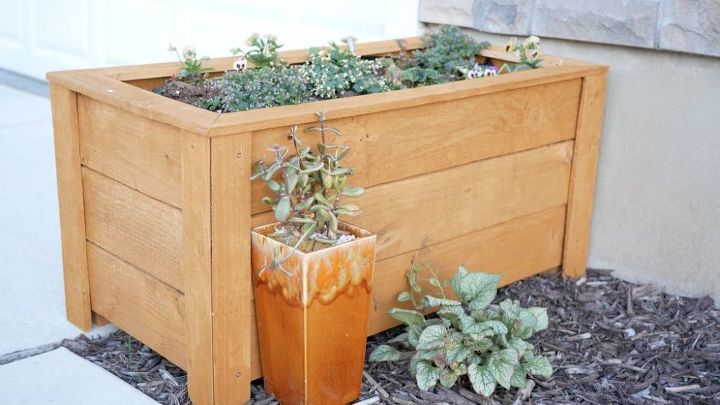This is an inexpensive yet outdoor-ready cedar planter box that can hold about 3 full bags of potting soil and has about 3 square feet of surface area.
Step 13: What did you do next? Visit URL: – ChangeRemove
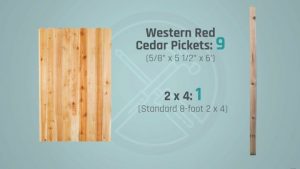
For this project, all you need as far as lumber is 9 pickets measuring 5/8″ x 5 1/2″ x 6′ and a single 2×4 (8 ft long). You’ll also need some brads and a brad nailer or, optionally, just outdoor screws such as decking screws.
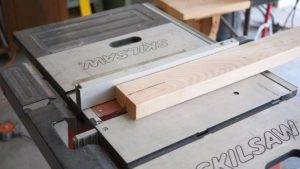
Start by ripping the 2×4 in half length-wise. This can be done with a table saw or a circular saw.

Cut all of the 2×2 pieces needed for the project. Cut the following from the 2x2s:
- 36” (2)
- 13” (2)
- 10” (4)
- 6″ (4)
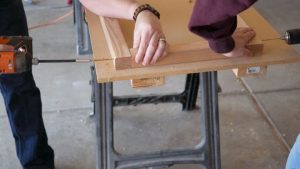
Put the base together by predrilling the holes and using 3-inch screws as shown in the video. Assemble the two 36″ pieces with the 13″ pieces between them to form a rectangle.
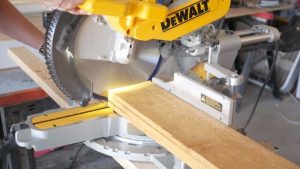
Cut each of the full pickets at this point. Here’s the list:
- 36” (6) – Long siding
- 17 1/4” (6) – Short siding
- 16 1/4” (6) – Floor board
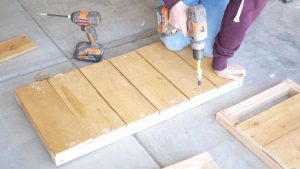
With the floor boards cut (the 16 1/4″ pieces), attach them to the 2×2 base using 1 1/2″ screws. Be sure to predrill the holes, like you see in the video, to avoid splitting the pickets. There should be enough room between the boards for a bit of space. This will provide drainage for the soil.
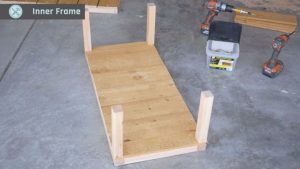
Next attach the 10″ pieces to the corners to create the inner frame. Predrill through the bottom and use the 3″ screws to attach each piece.
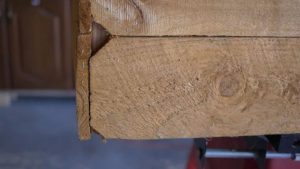
With the inner frame assembled, you can now attach all of the pickets. Place each of your 36″ pieces, starting with the first row being attached to the base. The first row should sit below the base and you can move up from there – this will leave room for the feet. If this is unclear, just check out the video where you can see this in action.
When the long pieces are on, finish up by putting the shorter end pieces on (the 17 1/4″ pieces). I used a brad nailer for this but if you don’t have one, screws can be used as well.
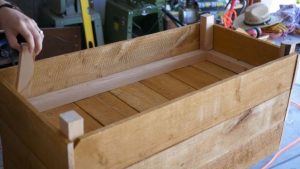
Add the feet using brads for now.
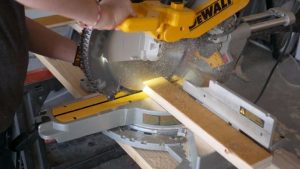
Next, cut your corner pieces. For this part, you have two options. The easier option is to just cut a picket in half lengthwise and leave square corners. The downside is that you’ll have some of the cut sections exposed, which won’t look as good as if you use the second method.
The second method involves using a 45 degree cut to hide the exposed edges. It’s a tiny bit more work but looks way better. Check out the video to see how this is done.
Whichever method you choose, you’ll need to cut the boards to length at this point. You should end up with 8 corner pieces at 18″ tall each.
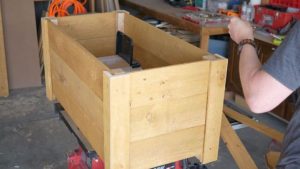
Add your corner pieces using exterior wood screws. If possible, use screws that are 2″ in length. I used the 3″ screws and they stuck out just a bit.
For the top frame, rip your last picket in half lengthwise.
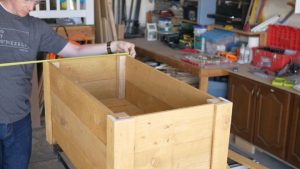
For the top frame, rip your last picket in half lengthwise. Get the measurement for your width and length just to be safe. You’ll want to make the outside measurement for your top frame at least as wide and long as your existing box.
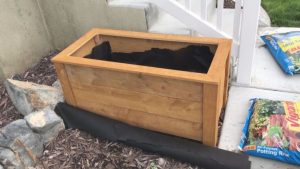
Assemble the top frame with brads and then attach it to your box with brads as well as two screws per side. At this point, I recommend sealing the entire box with water seal – especially the 2×4 pieces. The cedar is a naturally rot and mildew resistant material but it certainly wouldn’t do any harm to seal it as well. Also consider adding weed barrier to the inside of the box with some holes poked in the bottom for drainage.

And that’s it! Each box holds about three large bags of potting soil and this project can be used for flowers, fruits or vegetables. If you plan on using this for vegetables, however, be sure to use toxin-free finishes and avoid using chemically treated or pressure treated lumber.

